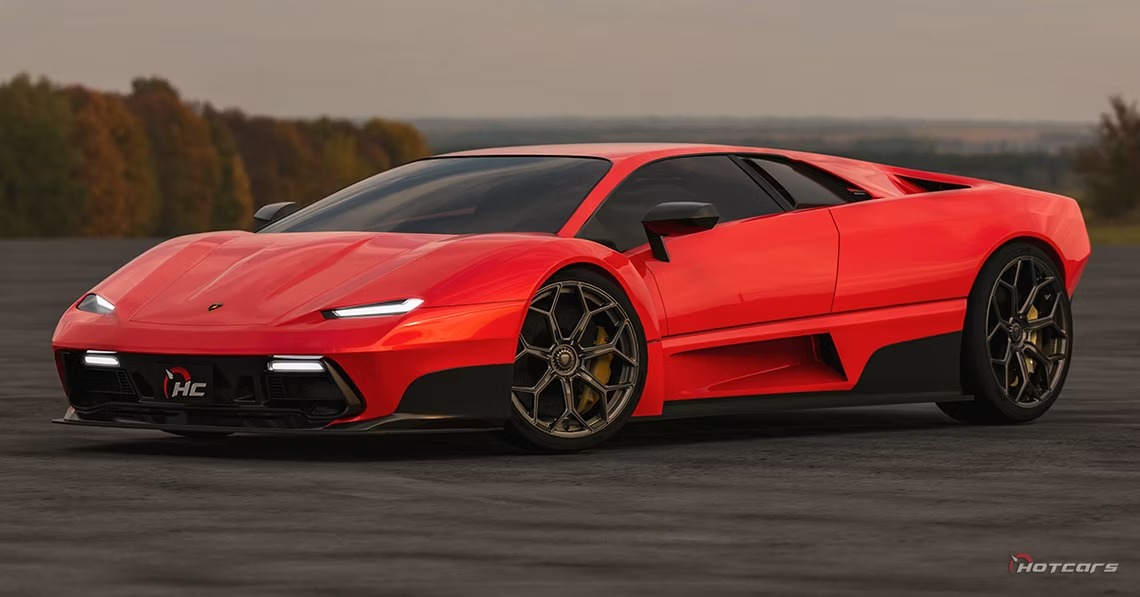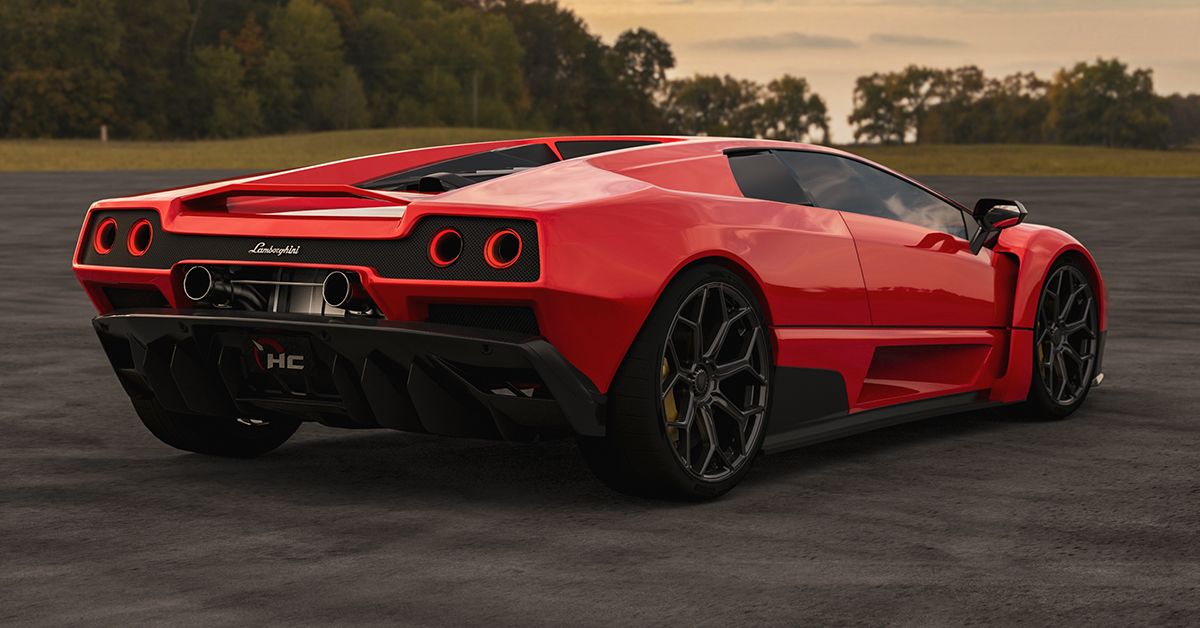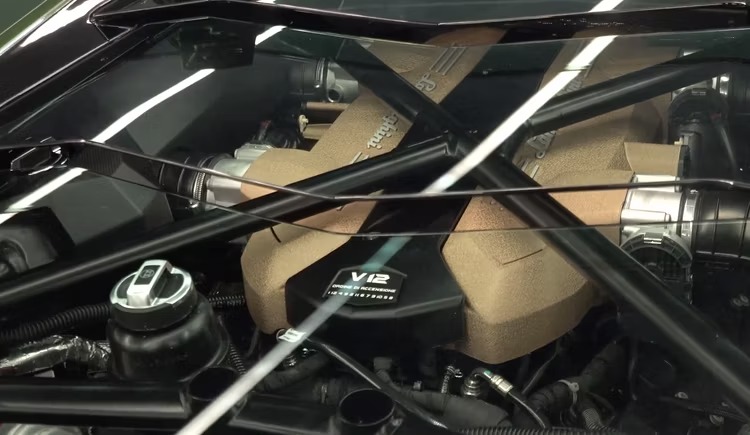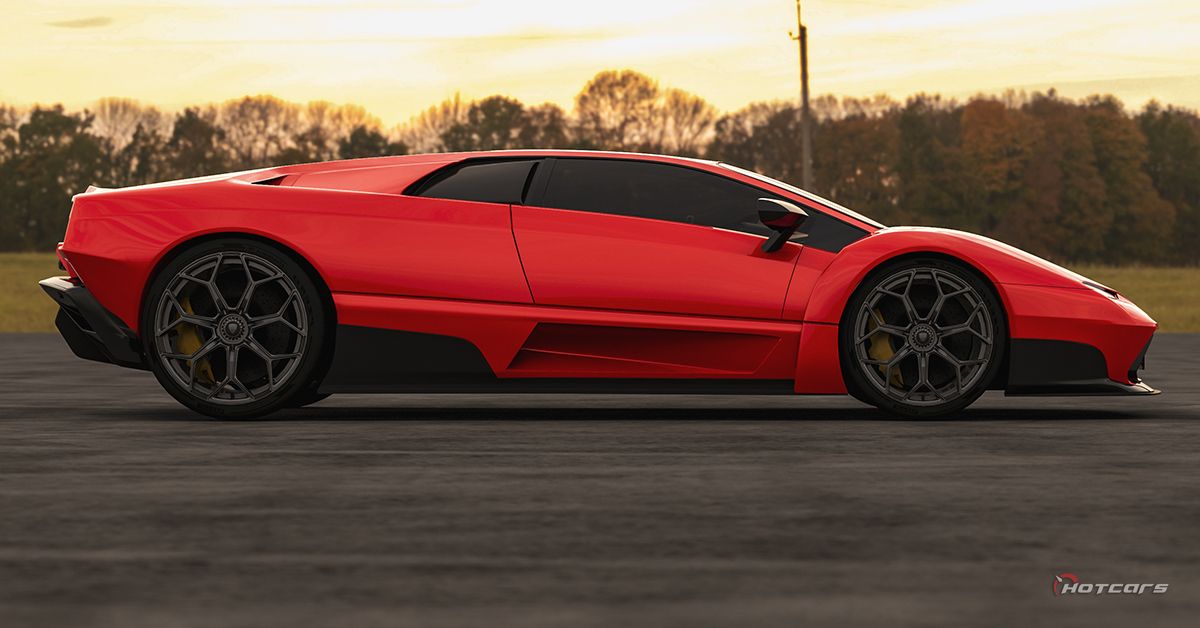Forget the Lamborghini Aventador Ultimae Roadster, the iconic naturally-aspirated V12 deserves a tribute in an equally iconic supercar.

We’re at the end of an era when it comes to naturally-aspirated V12-engine Lamborghini supercars. That’s because the 2022 Aventador LP 780-4 Ultimae Roadster will be the last pure Lamborghini V12. Ever. Every Lambo that comes after this will have some degree of electrification in its powertrain — from its supercars to its SUVs — all will be hybridized.
We think a more special tribute should be in order — a modern Lamborghini Diablo fits the bill perfectly. It is said to be one of the best expressions of the V12 that made Lamborghini famous. Not to mention the best car from the original Need For Speed game from 1995, which got us all hooked on the Diablo VT in the first place.
This reimagined 2023 Lamborghini Diablo concept was created exclusively for HotCars by digital-art wizard Rostislav Prokop. It achieves a fine balance between new and old, if anything with a Lamborghini badge can be associated with delicacy. It’s got the wedge-shape that’s now associated with a Lamborghini, and the softer curves of iconic older cars, like the Diablo and Miura.
So, before we have to say farewell to the spine-tingling V12, how about one more last swansong, but in this modernized Lamborghini Diablo?
A Taste Of What To Expect From A New Lamborghini Diablo
It may be wishful thinking to hope that Lamborghini pulls off another tribute model, but when the concept looks as beautiful as this modern Diablo, it’s worth the wish. The original Diablo was penned by design great Marcello Gandini, but further revised by Tom Gale before going into production. Later versions were born at the hands of Luc Donckerwolke. And now this modern Diablo has Rostislav Prokop to thank for its existence.
There’s a simple front end with the smooth, organic-looking shape to the front bumper of the original. The difference is that now the secondary lights find their way under the leading edge of the bumper. Slimmer headlights are more modern, but not quite the edgy lighting on the latest Lambos. If only it had the popup lights of the pre-facelift Diablo…
Unlike modern Lambos, this render keeps the original’s slim hood alive, with wide, subtly shaped fenders on either side. There’s more original Diablo in the signature side windows that lead deep into the doors, intersecting an impossibly thin strip of bodywork. Deep air intakes at the bottom of the doors, with gaping voids at the top of the haunches are all classic Diablo too. There’s no kink in the rear wheel arches, but that design always risked the wheels looking too small. In this reimagined Diablo, there’s no such danger.

The highlight of this new Lamborghini Diablo has to be the circular tail lights, mirrored in the twin exhaust exits. The pipes are mounted high enough to give traffic behind a look right into the headers.
The World’s Fastest Production Car In 1990, And A Handful To Drive
True to its name (Diablo is Devil in Spanish), the Lamborghini Diablo earned a reputation for being somewhat of a widow maker. When it was launched in 1990, it came without power steering, or ABS. Lamborghini only decided to make the Diablo easier to steer with power-assisted steering in 1993. They then took a whole six years to add ABS to the package!
This in the world’s fastest production car, that could touch a top speed of 202 mph. The original Diablo was powered by a 5.7-liter naturally-aspirated V12 with 485 hp. Later models, like the iconic Diablo VT, pumped that up to 529 hp and a 6.0-liter motor. Through it all, the V12 that drew its roots back to the first Lamborghini V12 decades earlier continued on.
What Engine The 2023 Lamborghini Diablo Should Have
The same Lamborghini V12 designed by Bizzarini lasted over 40 years through various Lamborghini models. In its final iteration in the Lamborghini Murcielago, it had grown to 6.2-liters. Later models went up to 6.5-liters. The new Aventador switched to an all-new 6.5-liter V12 that was thoroughly modern in comparison. Over a decade after the new engine debuted, it was even fitted with hybrid hardware for the Lamborghini Sian. But like we said, the Aventador will be the last Lamborghini to use a non-hybrid, naturally-aspirated V12.

Which means this is the end of the road for the free-revving, glorious sounding V12. Lamborghini has used V12 engines since its first production car, the Lamborghini 350 GTV. So a V12 is as integral to the personality of a Lambo as the Raging Bull logo. At least when it comes to its supercars. And that’s why a supercar icon like the Lamborghini Diablo deserves to the last tribute to the Lamborghini V12.










